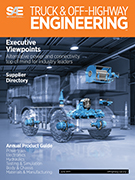Technical Paper
Challenges with the Introduction of X-By-Wire Technologies to Passenger Vehicles and Light Trucks in regards to Functional Safety, Cybersecurity and Availability
2023-04-11
2023-01-0581
Classic vehicle production had limitations in bringing the driving commands to the actuators for vehicle motion (engine, steering and braking). Steering columns, hydraulic tubes or steel cables needed to be placed between the driver and actuator. Change began with the introduction of e-gas systems. Mechanical cables were replaced by thin, electric signal wires. The technical solutions and legal standardizations for addressing the steering and braking systems, were not defined at this time. Today, OEMs are starting E/E-Architecture transformations for manifold reasons and now have the chance to remove the long hydraulic tubes for braking and the solid metal columns used for steering. X-by-wire is the way forward and allows for higher Autonomous Driving (AD) levels for automated driving vehicles. This offers new opportunities to design the vehicle in-cabin space. This paper will start with the introduction of x-by-wire technologies.







